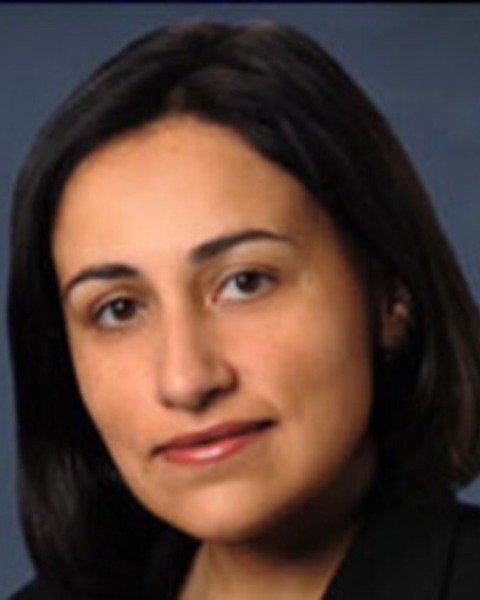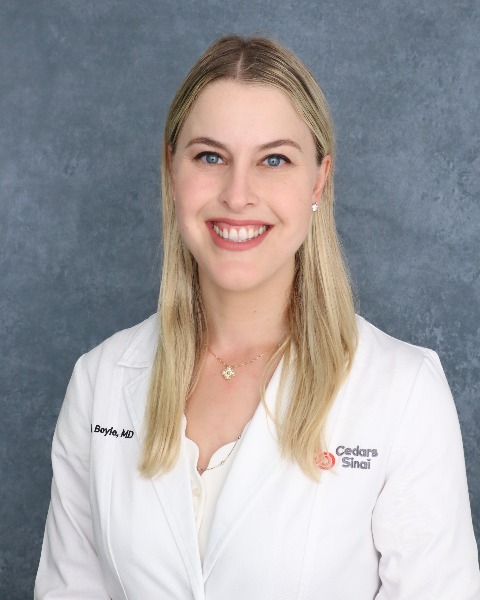Breast
E21: Axillary Lymph Node Dissection Should Not Be Avoided in Patients Who Undergo Neoadjuvant Chemotherapy for a Positive Sentinel Node after Targeted Axillary Staging

Farin Amersi, MD (she/her/hers)
Associate Professor of Surgery
Cedars-Sinai Medical Center
Los Angeles , California, United States
Farin Amersi, MD (she/her/hers)
Associate Professor of Surgery
Cedars-Sinai Medical Center
Los Angeles , California, United States
Marissa K. Boyle, MD
Breast Surgical Oncologist
Cedars-Sinai Medical Center
West Hollywood, California, United States- RR
Rhea Rahimtoola, BA
Research Intern
Cedars Sinai Medical Center, United States .jpg)
Alice Chung, MD
Breast Surgical Oncologist
Cedars-Sinai Medical Center
Beverly Hills, California, United States- CD
Catherine Dang, MD
Breast Surgical Oncologist
Cedars-Sinai Medical Center, United States - SK
Scott Karlan, MD
Breast Surgical Oncologist
Cedars-Sinai Medical Center, United States - EP
Edward Phillips, MD
Professor of Surgery
Executive Vice Chair, Department of Surgery, United States - YY
Yuan Yuan, MD, PhD
Director Breast Medical Oncology
Cedars-Sinai Medical Center, United States - JJ
Julie Jang, MD, PhD
Radiation Oncologist
Cedars-Sinai Medical Center, United States - SS
Stephen L. Shiao, MD, PhD
Associate Professor Radiation Oncology
Cedars-Sinai Medical Center, United States - AG
Armando E. Giuliano, MD
Professor of Surgery, Director Division of Surgical Oncology
Cedars-Sinai Medical Center, United States - JT
Joshua Tseng, MD, MBA
General Surgeon
Cedars-Sinai Medical Center, United States
ePoster Abstract Author(s)
Submitter(s)
Author(s)
Introduction: Recent studies have demonstrated the utility and reliability of sentinel lymph node biopsy (SLNB) or targeted axillary dissection with sentinel node biopsy (TAD) in predicting residual tumor burden in node positive breast cancer (BC) patients who undergo neoadjuvant chemotherapy (NAC). De-escalation of axillary surgery with omission of axillary lymph node dissection (ALND) in patient with a negative SLN after TAD or SLNB following NAC for node positive BC is becoming increasingly accepted. The aim of our study was to compare residual axillary disease burden, adjuvant treatment and recurrence after TAD vs SLNB in patients with node positive disease after NAC.
Methods:
Methods: Patients undergoing NAC for stage II-III node positive BC from 02/2016 – 6/2022 were identified from a prospectively maintained database. Patients who were clinically node negative (cN0) after NAC, had a positive SLN after either TAD or SLNB alone and underwent ALND were evaluated.
Results:
Results: Of the 471 patients who underwent NAC, 157 (33%) had stage II-III node-positive BC and were cN0 after NAC and prior to surgery. 66 (42%) patients had no TAD or SLNB due to positive nodes. 39 (25%) patients had an ALND after TAD or SLNB, of which 23 (59%) had TAD and 16 (41%) had SLNB alone (Table). There were no significant differences between the SLNB vs TAD groups including median age (47 vs 47 years; P=0.94) tumor size (2.9 vs 3.4cm p=0.646), or receptor status with a majority of tumors being ER+/HER2-neg (73.9 vs 81.3% p=0.50). More patients underwent mastectomy in the TAD group (82.6% vs 17.4%). Patients in the TAD group had a significantly higher median number of SLN excised compared to SLNB alone (SLNB 3 nodes, TAD 5 nodes, p=0.017), although no differences in the number of positive SLN (2.43 vs 2.06, p=0.48) were observed. There were significant differences between the groups in additional number of positive nodes after ALND (SLNB: 2.9 [0-8] vs TAD: 1.9 [0-13], p= 0.017. All patients received adjuvant chest wall radiation (RT), 23 (59%) received nodal RT, and 6 (15%) received supraclavicular/internal mammary nodal RT. There was one (2.6%) axillary recurrence and 3 (7.7%) distant recurrences at median follow-up of 38 (12-65) months.
Conclusions:
Conclusions: Completion axillary dissection may identify significant residual nodal disease in patients who undergo NAC for node positive breast cancer and are found to have a positive sentinel node after either TAD or SLNB. Information gained from ALND can guide extent of adjuvant treatment and may alter radiation fields.
Learning Objectives:
- Options for patients for staging of regional lymph node disease for patients with N1-N3 lymph node positive disease who undergo neaodjuvant chemotherapy
- TAD is equivalant to SLN biopsy for staging of lymph node disease
- understand the role of axillary lymph node dissection in patients with positive sentinel node after neoadjuvant chemotherapy
